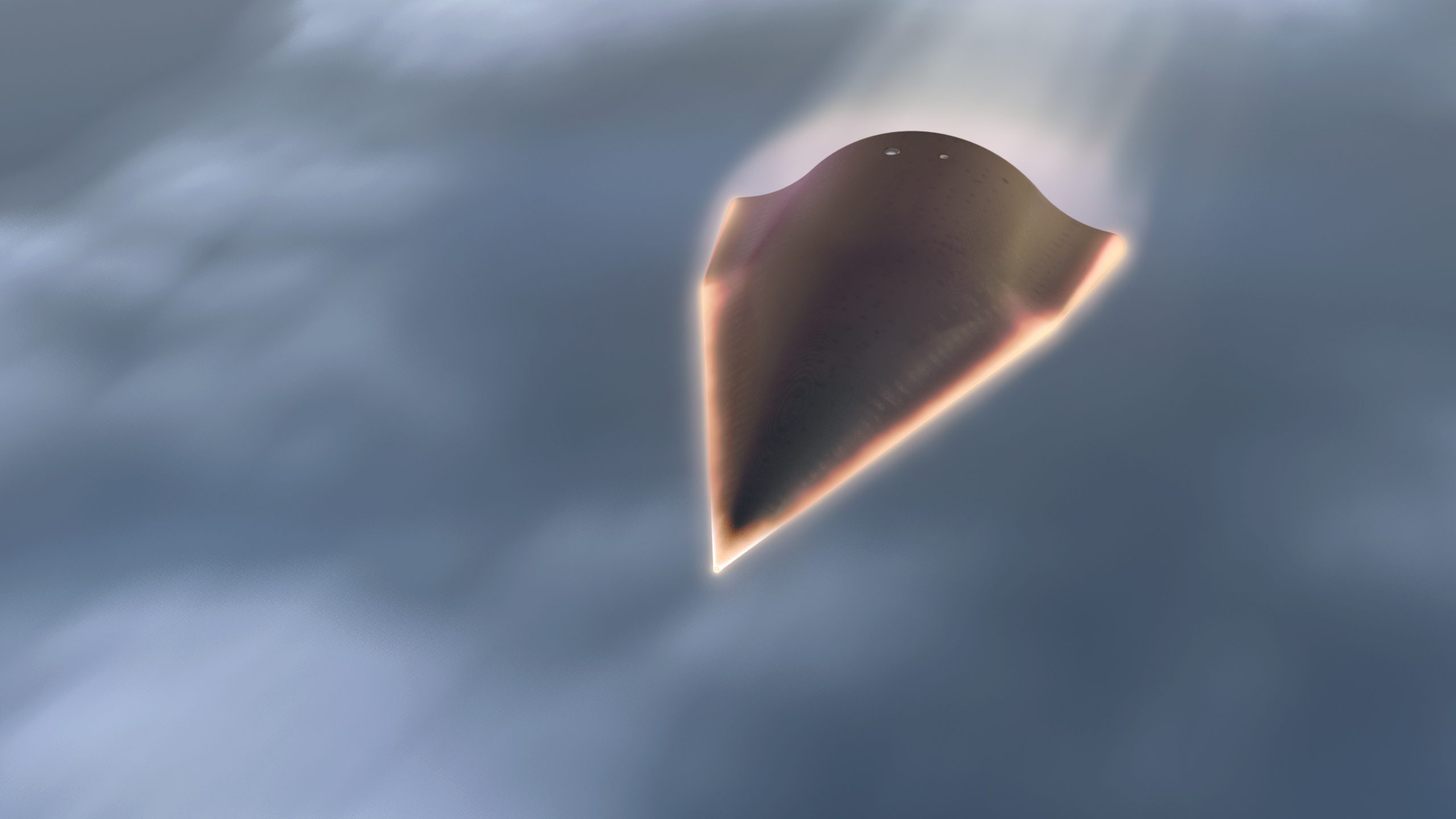
A concept rendering ?for Lockheed Martin’s Hypersonic ?Technology Vehicle-2. Lockheed this week received a contract for a second hypersonic system, the AGM-183 Air-Launched Rapid Response Weapon. Illustration courtesy of Lockheed Martin.?
The Air Force has awarded Lockheed Martin a contract worth up to $480 million to “begin designing a second hypersonic weapon prototype” designated the AGM-183 Air-Launched Rapid Response Weapon, or ARRW.
The award follows a $928 million contract awarded to Lockheed in June for the Hypersonic Conventional Strike Weapon (HCSW), a separate approach to a hypersonic missile system. Lockheed’s Missiles and Fire Control division got the ARRW work, and Lockheed Space is working on HCSW. “Hypersonic” refers to air vehicles traveling in the Mach 5-plus regime.
According to an Air Force press release regarding the ARRW, the service is employing “rapid prototyping authorized by Section 804 of the FY16 National Defense Authorization Act to explore the art of the possible and to advance these technologies to a capability in 2021.”
The ARRW is a system of the “boost-glide” type wherein an aerodynamic shape is accelerated to hypersonic speed by a rocket booster. The booster then falls away, allowing the shape to coast and maneuver at hypersonic speed to the target. The Air Force said the ARRW and HCSW are “unique capabilities for the warfighter and each has different technical approaches.” A service spokeswoman elaborated that the “two systems offer different flight profiles and payload size, offering complementary capabilities.” Both would be air-launched.
The ARRW is “leveraging the technical base established by the Air Force/DARPA partnership,” which produced the successful X-51 hypersonic research missile, according to a USAF press release. The X-51 program was a Boeing effort.
The USAF release noted that the service signed a memorandum of agreement in late June to work cooperatively with the Missile Defense Agency, Navy, and Army on hypersonic boost glide technology. Under that agreement, the Air Force has purview over air-launched hypersonic weapons.
In a statement, USAF Chief of Staff Gen. David Goldfein said “the Joint Team requires the right mix of agile capabilities to compete, deter, and win across the spectrum of competition and conflict … We must push beyond the boundaries of technology and own the high ground in this era of great power competition and beyond.”
Air Force Secretary Heather Wilson said the service is going to “go fast and leverage the best technology available to get hypersonic capability to the warfighter as soon as possible.”
Lockheed Martin is also working with the Air Force and the Defense Advanced Research Projects Agency on the Tactical Boost Glide project, and on the Hypersonic Air-breathing Weapon Concept, or HAWC. Raytheon is the other contractor working on HAWC. The Air Force has not said how the projects relate to each other.
The Air Force noted that its Life Cycle Management Center’s Armament Directorate is the overseeing organization for all the hypersonic weapon systems.
In addition to the ARRW, HCSW, TBG, and HAWC, Lockheed’s “Skunk Works” is believed to still be working on the High Speed Strike Weapon, which sources say is a tactical missile in the Mach 3-plus category that resembles its D-21 drone, which USAF launched from SR-71s and B-52s in the 1970s. The HSSW is derivative of the Revolutionary Approach to Time Critical Long Range Strike program Lockheed explored with the Navy in the early 2000s.
The HCSW will be guided by GPS/Inertial Guidance System and carry a warhead, which will be Government-Furnished Equipment. The Air Force did not say whether the ARRW carries a warhead or achieves explosive effect with simple kinetic impact. All USAF’s hypersonic weapons are intended for use against time-critical targets, as launched from aircraft—notionally, B-52s or F-15Es—outside the range of an enemy’s air defenses.
For more on the Air Force’s hypersonic weapon efforts, see The Great Hypersonic Race from the August issue of Air Force Magazine.